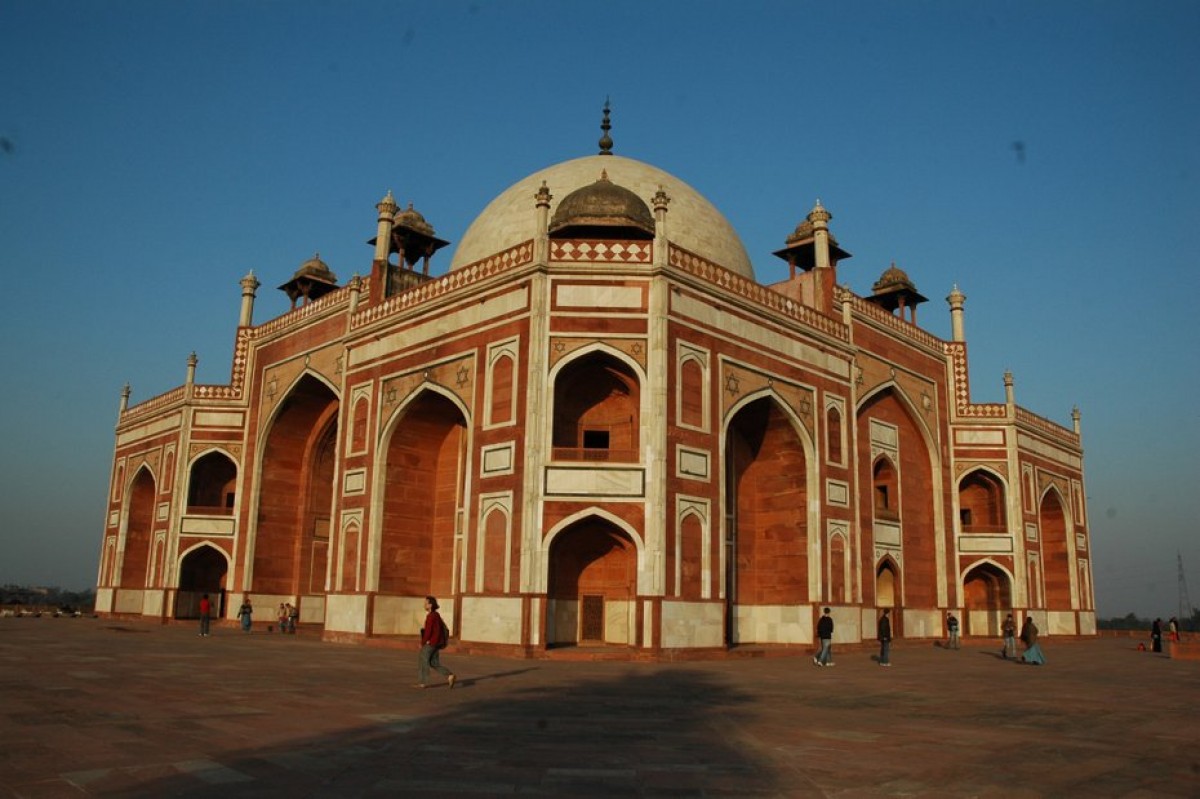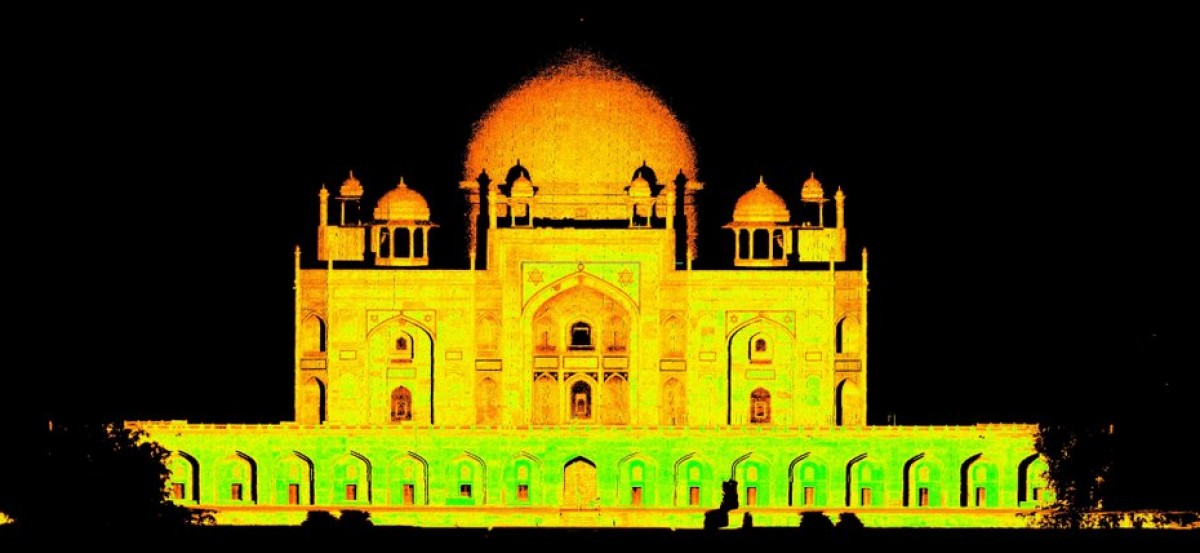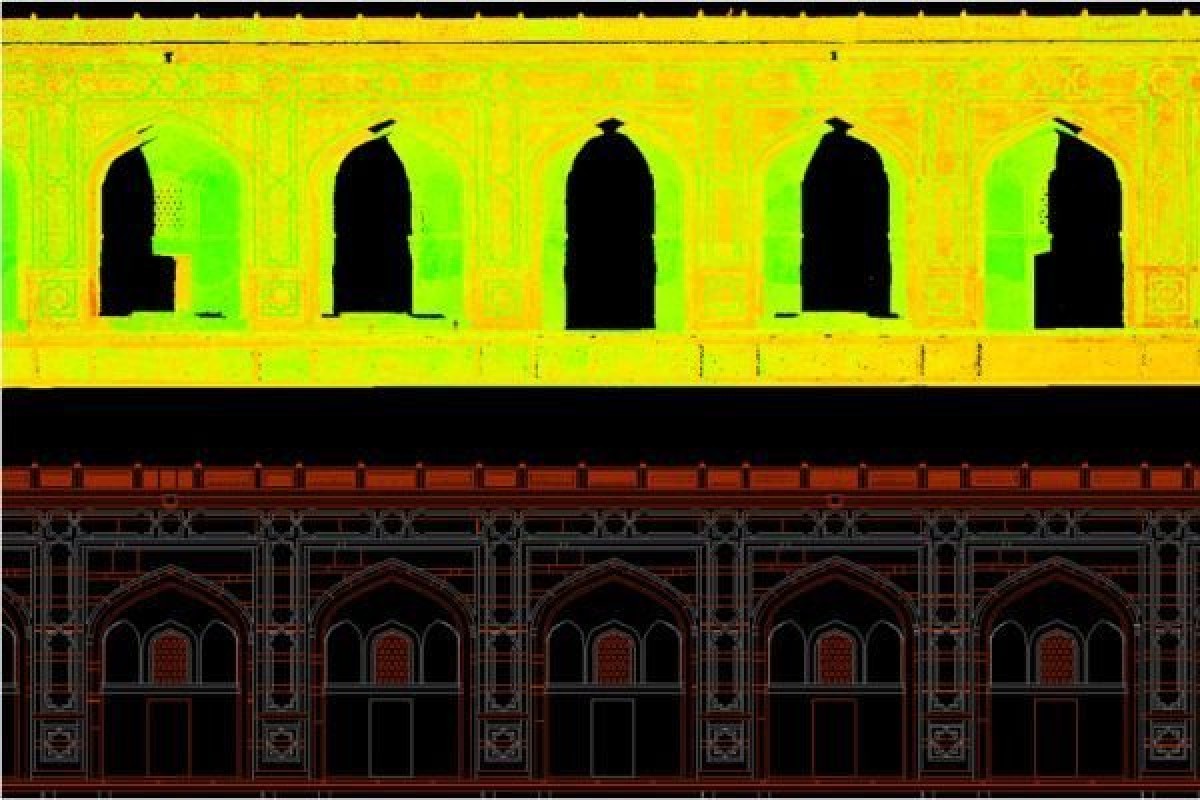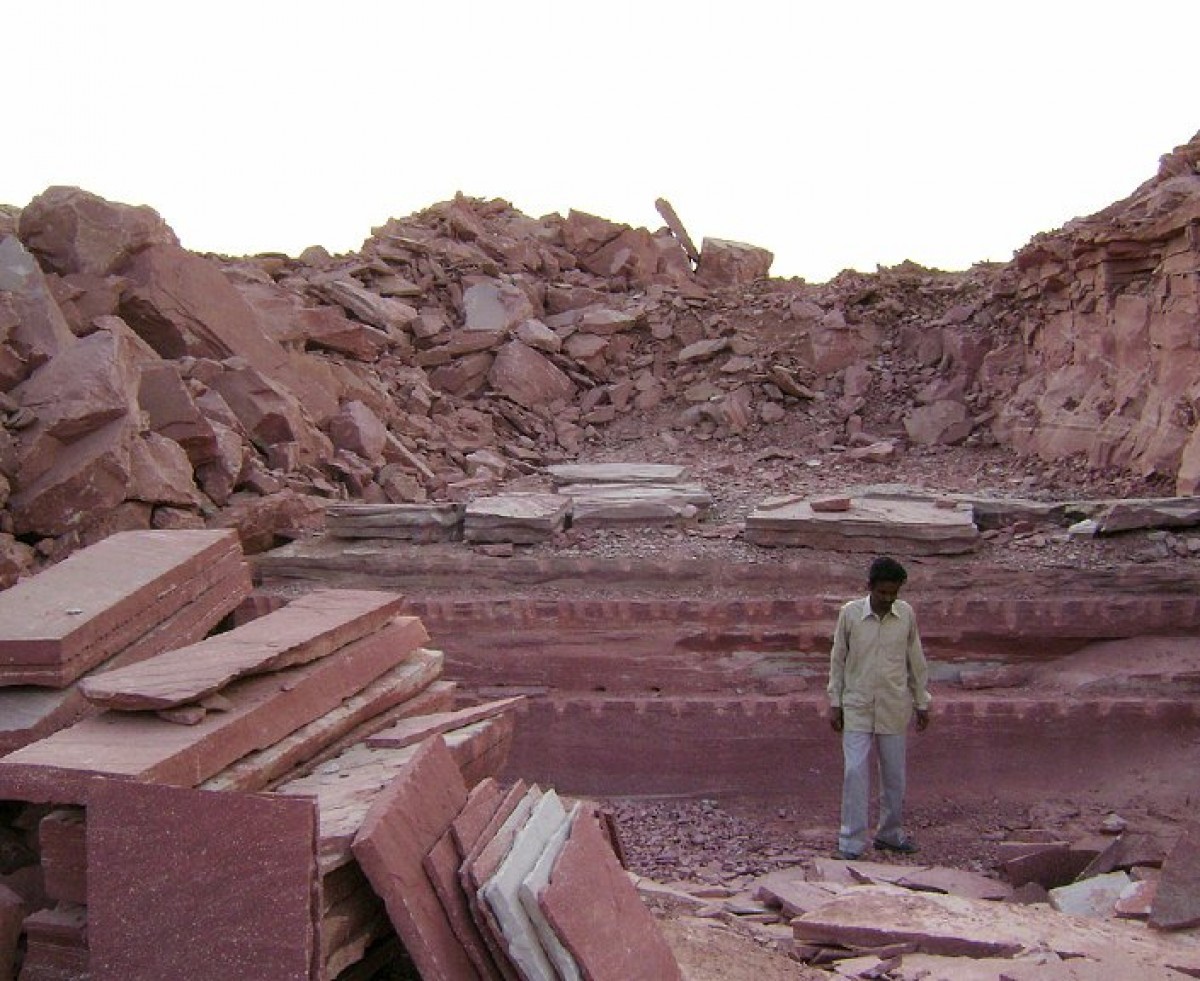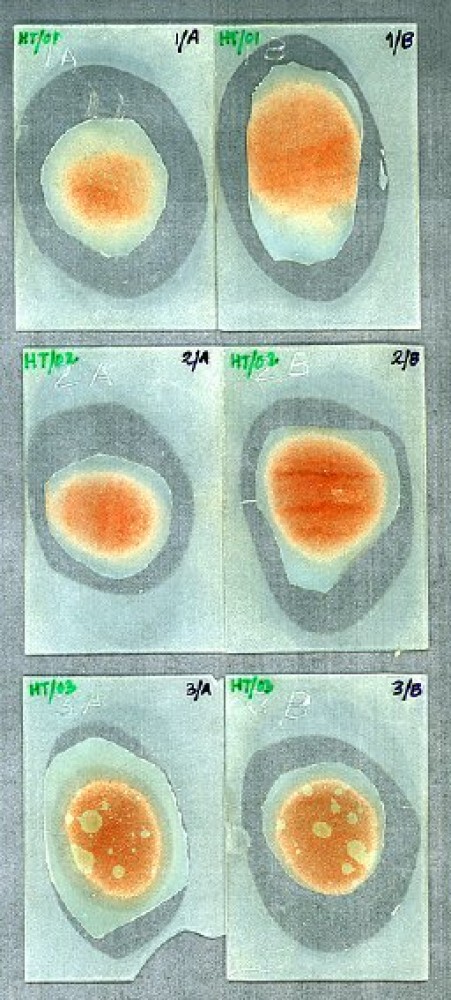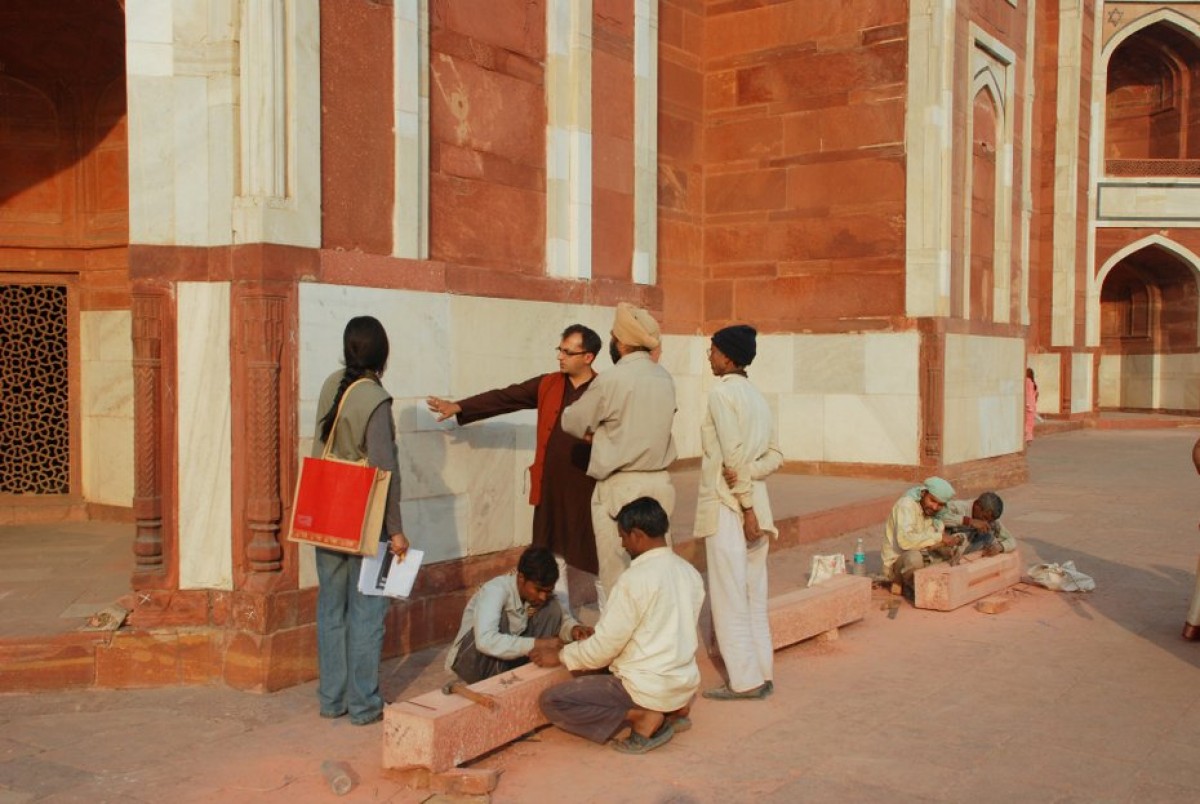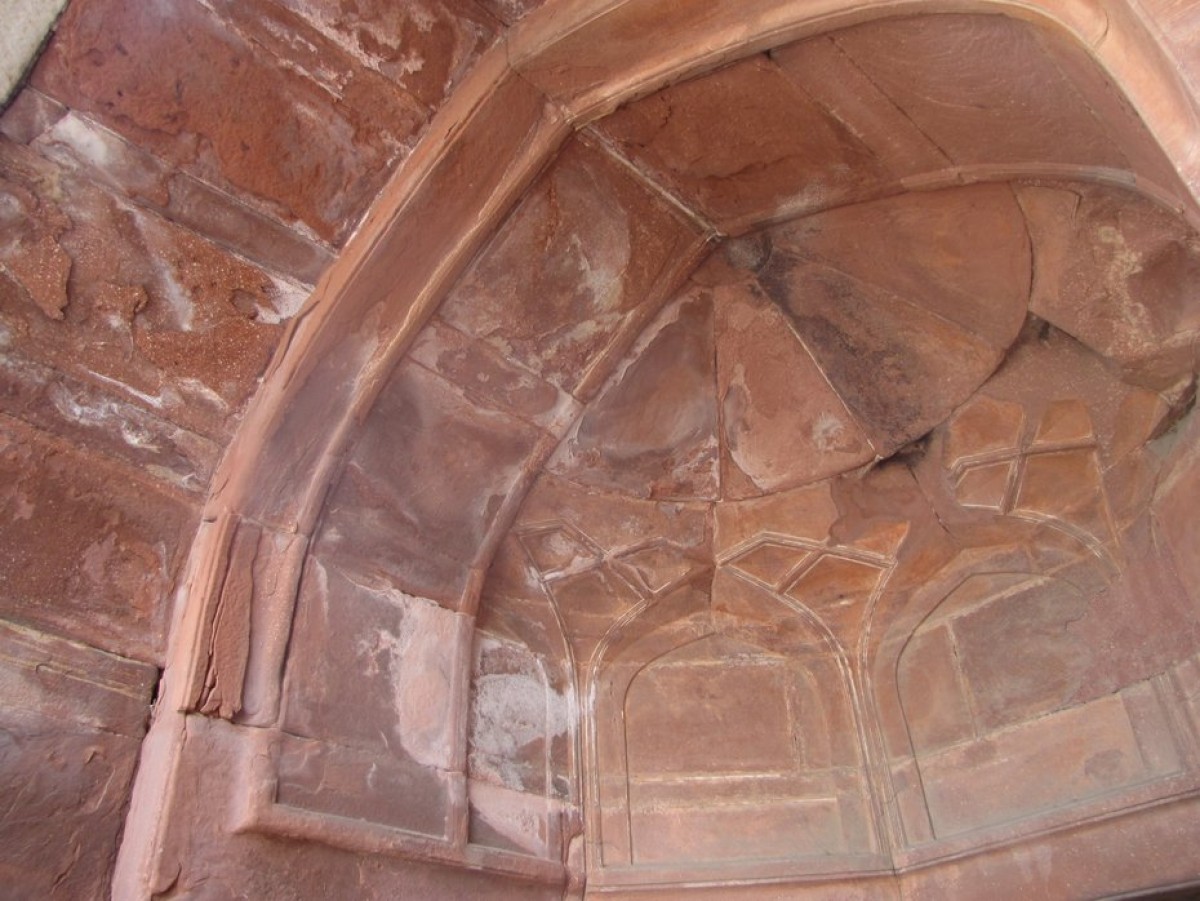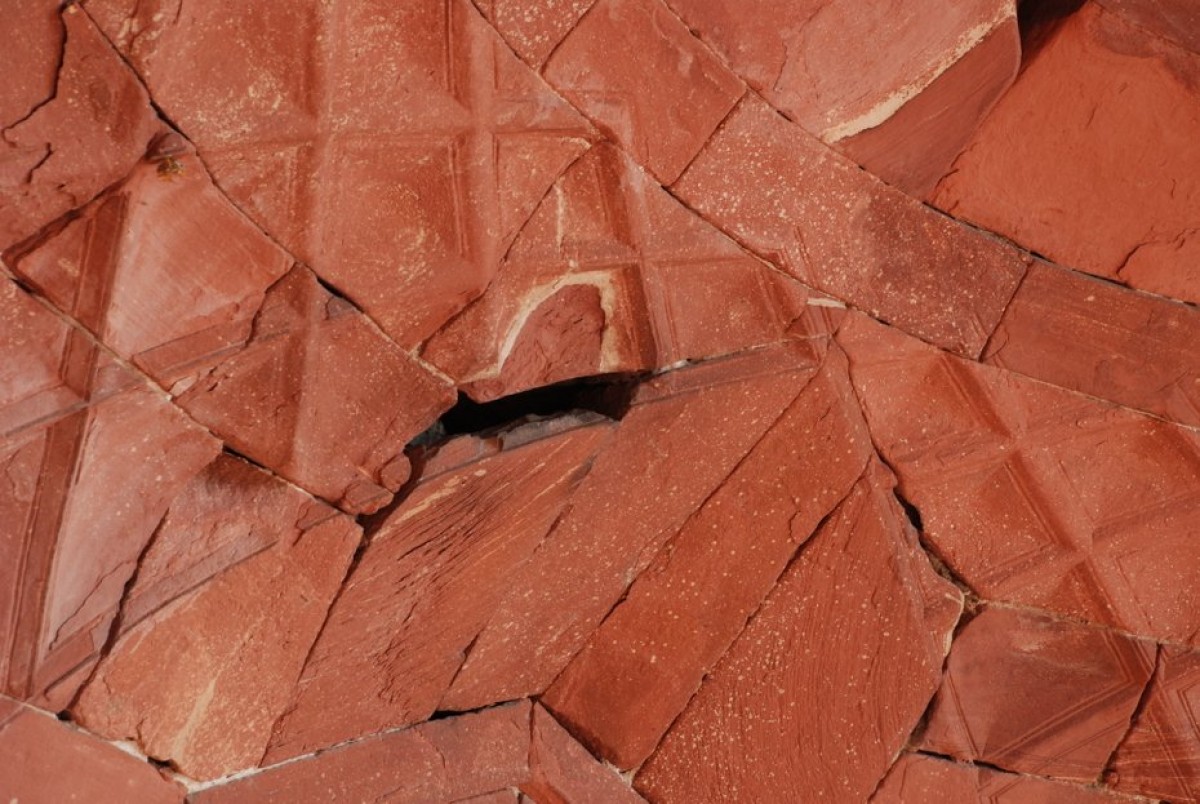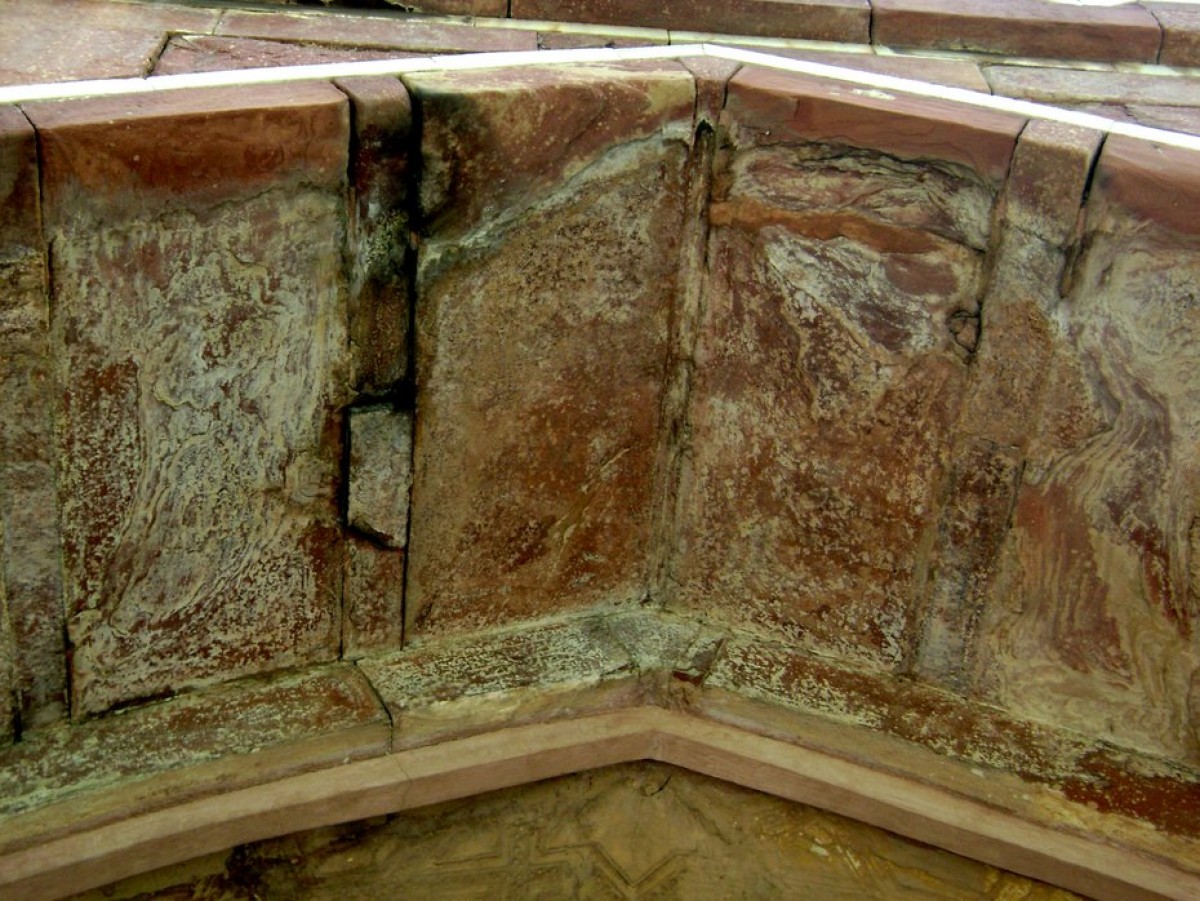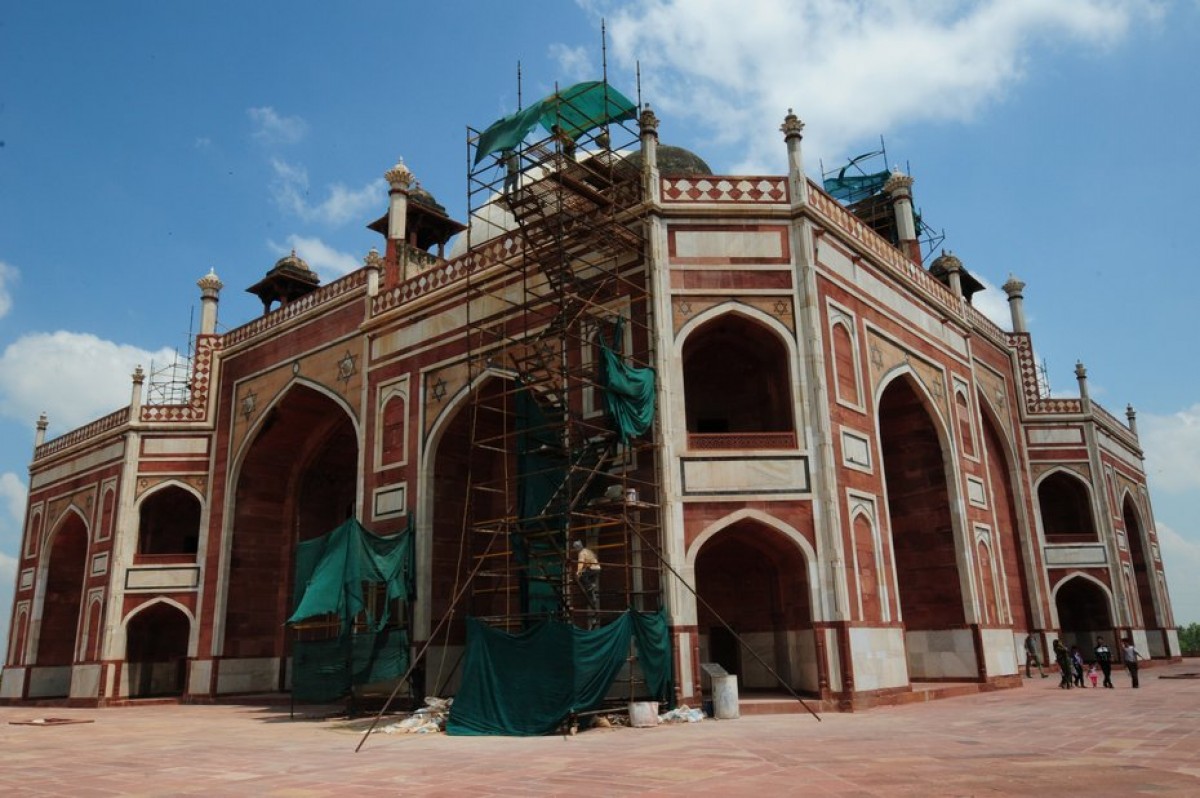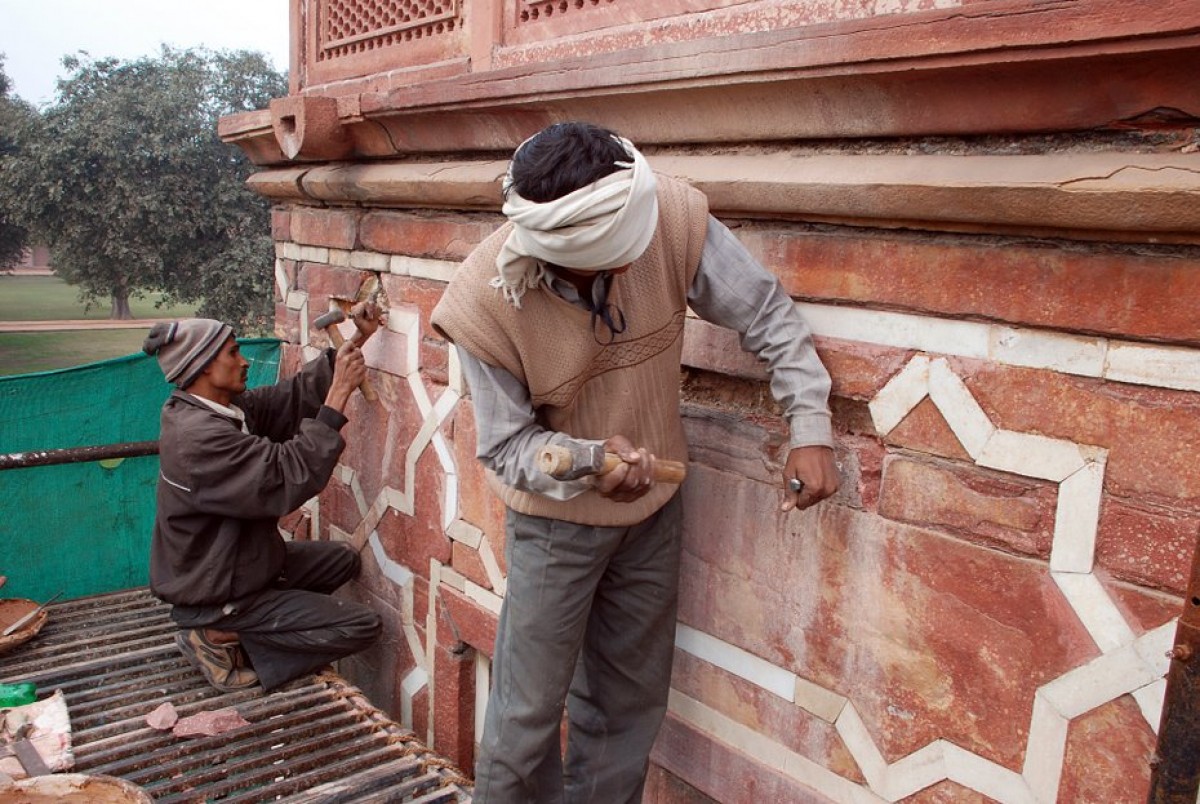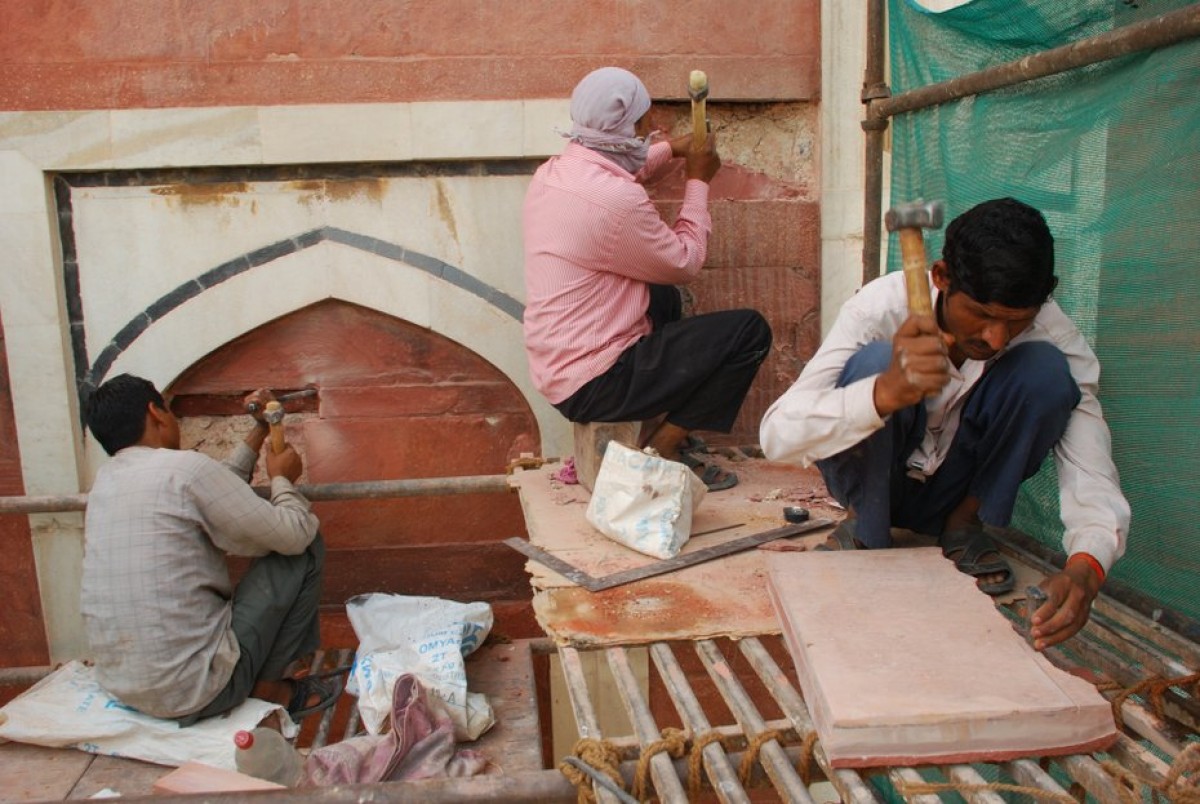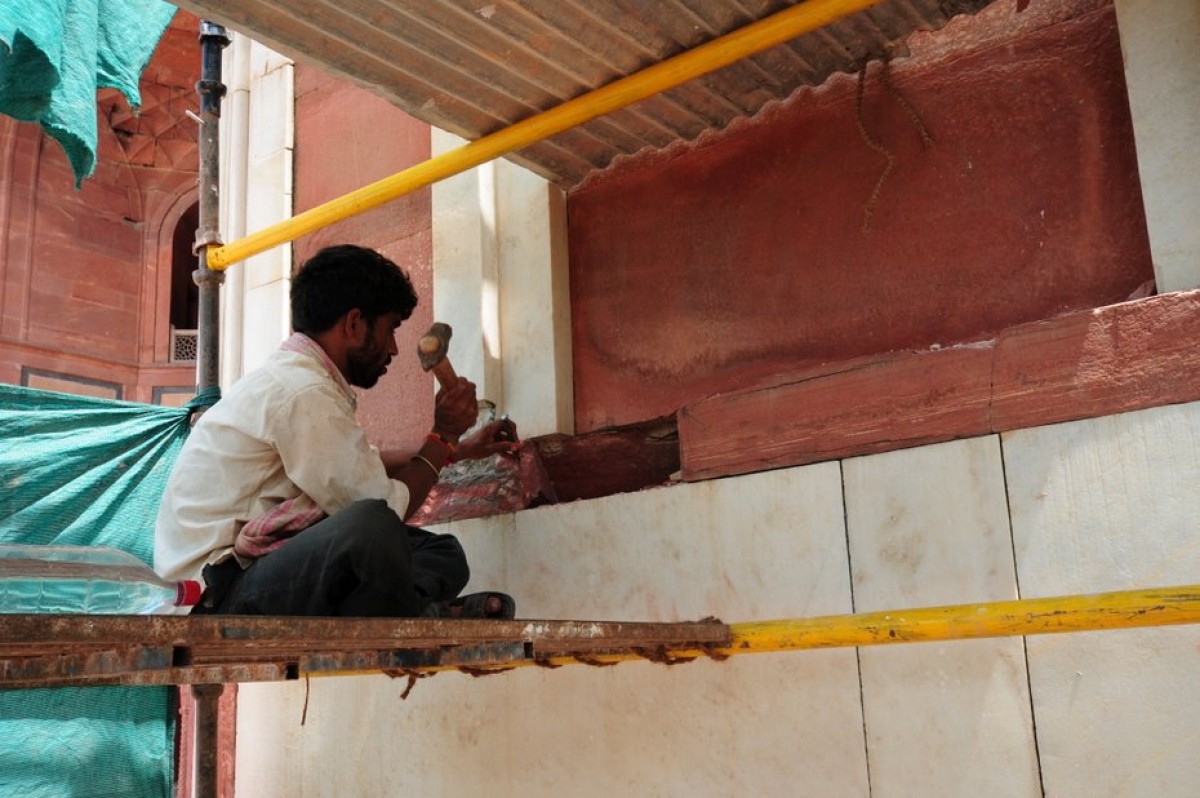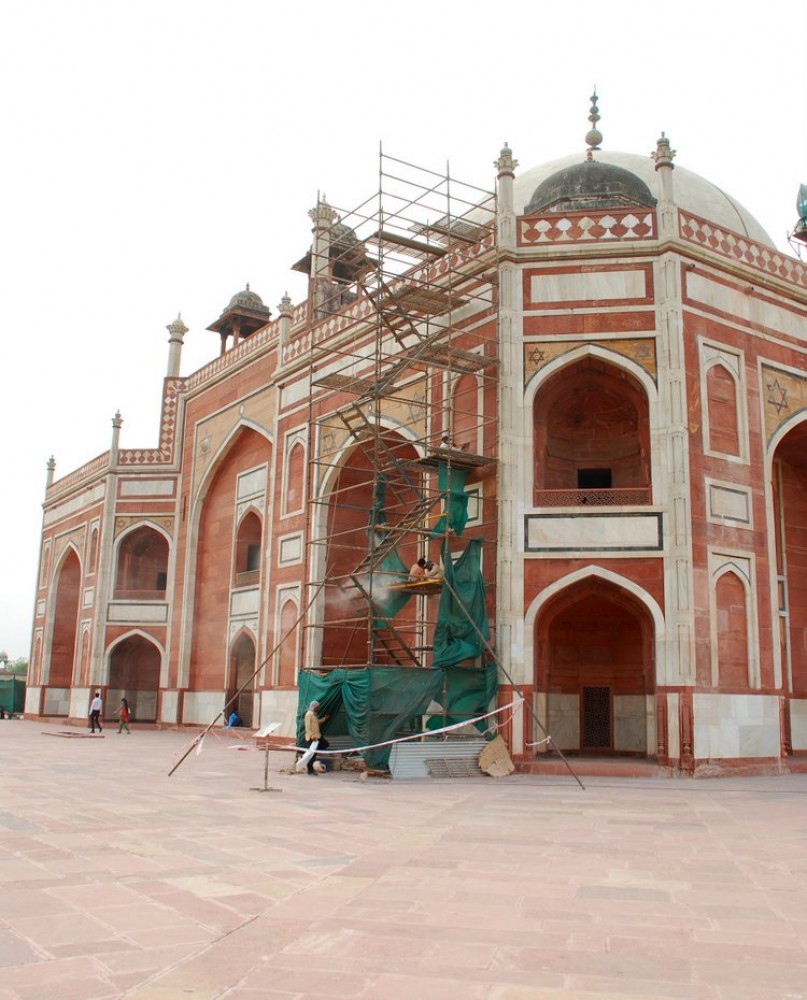
Conservation works on the main façade were carried out to ensure long term preservation without the need for a major conservation effort at Humayun’s Tomb as well as remove inappropriate 20th century repairs where stone patterns, considered significant at Humayun’s Tomb, have been disturbed.
Each façade stone that was considered for repair/ replacement (partial or complete) was marked as such for a year long period prior to conservation work being undertaken and reviewed by the ASI Core Committee along with other national and international experts. A significantly higher percentage of the Stone on the façade of the lower arcade required repairs or replacement owing to water ingress from the roof above and cement pointing of stone joints in the 20th century. Conservation works on this section were completed in 2011.
At the onset an extensive documentation of stonework, including a stone-by-stone condition assessment of the entire façade was carried out. This condition assessment and documentation was used to prepare an appropriate conservation strategy with the following parameters:
- Stone that had severely deteriorated was to be replaced.
- Where only partial stone deterioration had occurred any indenting should not disturb the stone pattern on the façade. Essentially a stone indent was not to go across two stones.
- Where past replacements had led to architectural details being altered these were removed and the original detail re-inserted as at the plinth level of the main mausoleum chamber where stones in excess of one foot thickness were required.
- Any stone that in the view of the craftsmen would require replacement within 10-15 years was repaired/ replaced.
- Stone that had burst due to the iron dowel holding it to the masonry having rusted and corroded were considered for partial replacement by indenting.
All new stone for replacement was prepared by the stone craftsmen using traditional tools and techniques similar to those that would have been used by the original builders of Humayun’s Tomb. All stones were hand chiseled to match the original finish as well as ensure that the patina covers the stone in a manner similar to that occurring on original stones. Decayed stones were removed carefully and replaced with new stones with similar geological specifications with same sectional and construction details.
Stone replacement work is now completed on all the facades of the upper plinth as well as the neck of the dome. 44 decorative stone pilasters, which were prepared in 2009 and allowed to weather naturally, were used to replace damaged stones of exactly the same design, size, and geological characteristics.
Marble stone bands on the lower plinth and the principal façade which were inappropriately replaced and repaired in the 20th century with multiple stone pieces and of incorrect specifications with regard to size/ width/ depth/ colour/texture have now been replaced with stones matching original specifications.
For the neck of the dome, seven types of geometrical shaped stone pieces were prepared on site in Dholpur sandstone, slate, marble and red sand stone.














